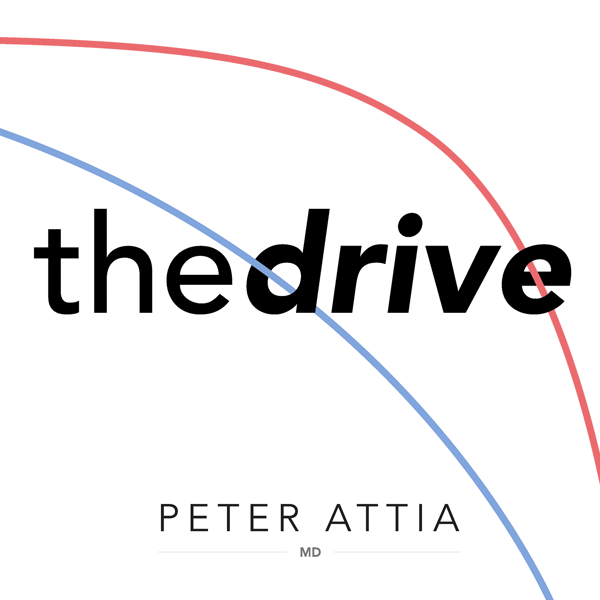#188 - AMA #30: How to Read and Understand Scientific Studies
The Peter Attia Drive
Peter Attia, MD
4.7 • 7.3K Ratings
🗓️ 20 December 2021
⏱️ 30 minutes
🧾️ Download transcript
Summary
In this “Ask Me Anything” (AMA) episode, Peter and Bob dive deep into all things related to studying studies to help one sift through all the noise to find the signal. They define the various types of studies, how a study progresses from idea to execution, and how to identify study strengths and limitations. They explain how clinical trials work, as well as the potential for bias and common pitfalls to watch out for. They dig into key factors that contribute to the rigor (or lack thereof) of an experiment, and they discuss how to measure effect size, differentiate relative risk from absolute risk, and what it really means when a study is statistically significant. Finally, Peter lays out his personal process when reading through scientific papers.
If you’re not a subscriber and listening on a podcast player, you’ll only be able to hear a preview of the AMA. If you’re a subscriber, you can now listen to this full episode on your private RSS feed or on our website at the AMA #30 show notes page. If you are not a subscriber, you can learn more about the subscriber benefits here.
We discuss:
- The ever changing landscape of scientific literature [2:15];
- The process for a study to progress from idea to design to execution [4:15];
- The various types of studies and how they differ [7:30];
- The different phases of a clinical trial [19:15];
- Observational studies and the potential for bias [26:30];
- Experimental studies: Randomization, blinding, and other factors that make or break a study [44:00];
- Power, p-values, and statistical significance [56:15];
- Measuring effect size: Relative risk vs. absolute risk, hazard ratios, and “Number Needed to Treat” [1:07:45];
- How to interpret confidence intervals [1:17:30];
- Why a study might be stopped before its completion [1:23:45];
- Why only a fraction of studies are ever published and how to combat publication bias [1:31:30];
- Why certain journals are more respected than others [1:40:30];
- Peter’s process when reading a scientific paper [1:43:45]; and
- More.
Transcript
Click on a timestamp to play from that location
| 0:00.0 | Hey everyone, welcome to a sneak peek, ask me anything, or AMA episode of the Drive Podcast. |
| 0:16.5 | I'm your host, Peter Atia. |
| 0:18.3 | At the end of this short episode, I'll explain how you can access the AMA episodes in full, |
| 0:22.9 | along with a ton of other membership benefits we've created. |
| 0:25.9 | Before you can learn more now by going to peteratia-md.com forward slash subscribe. |
| 0:31.5 | So without further delay, here's today's sneak peek of the Ask Me Anything episode. |
| 0:39.8 | Welcome to another Ask Me Anything episode, AMA number 30. |
| 0:43.1 | I'm once again joined by Bob Kaplan. |
| 0:44.9 | In today's episode, we discuss all things around studying studies. |
| 0:49.0 | If you've listened to this podcast or read any of my weekly emails, you know that I place |
| 0:52.5 | a large emphasis on being able to sift through the noise and find the signal when it comes |
| 0:56.8 | to various studies and papers that are printed both as the studies themselves and unfortunately |
| 1:01.1 | a lot of times with the media reports on them. |
| 1:02.8 | So if you follow the news, there's no shortage of articles that either contradict each other, |
| 1:06.7 | seem too good to be true, don't make any sense. |
| 1:09.0 | It can be hard to understand this, so what do you do? |
| 1:11.0 | Well, we've, as some of you may know, written a series on this called studying studies, |
| 1:15.3 | but we've also tried to tackle some of the bigger things in this AMA. |
| 1:18.6 | And we come through a lot of the questions that many of you have been asking over the |
| 1:21.3 | previous months and years that relate to this topic. |
| 1:23.3 | And I think we have enough of them here that we were able to put together a solid episode. |
| 1:26.6 | This episode's a bit longer than normal. |
... |
Please login to see the full transcript.
Disclaimer: The podcast and artwork embedded on this page are from Peter Attia, MD, and are the property of its owner and not affiliated with or endorsed by Tapesearch.
Generated transcripts are the property of Peter Attia, MD and are distributed freely under the Fair Use doctrine. Transcripts generated by Tapesearch are not guaranteed to be accurate.
Copyright © Tapesearch 2025.

